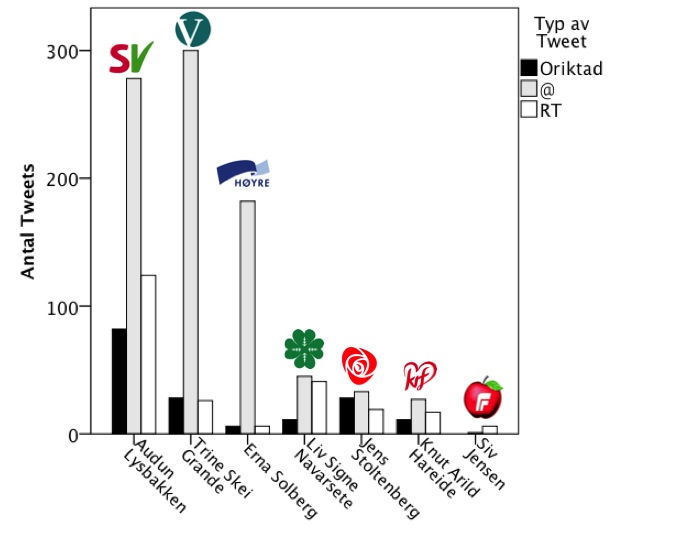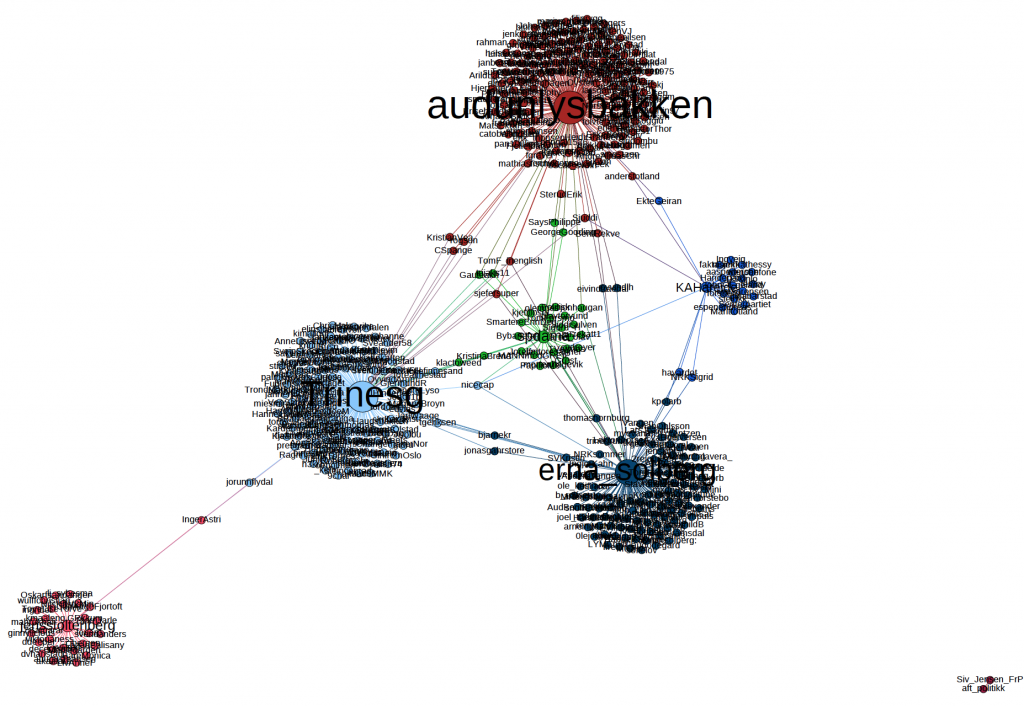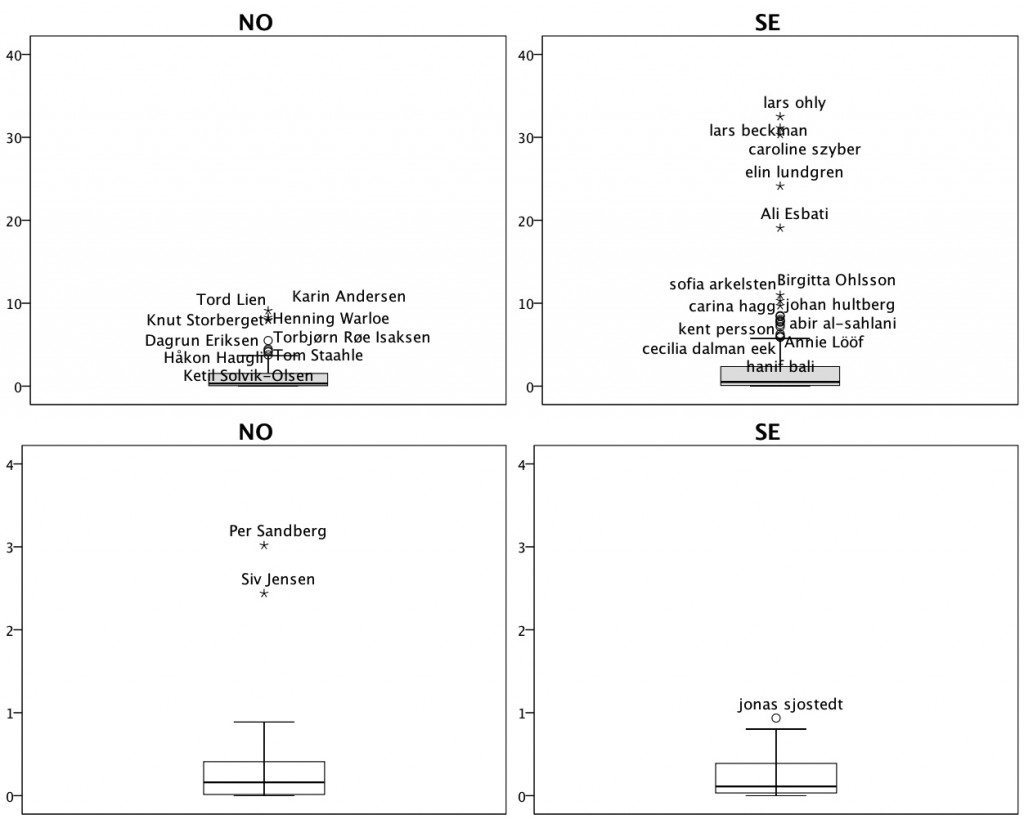I morse deltog jag i norsk radio – närmare bestämt P2 Kulturnytt, sändningen kl. 08.05 (min del är tillgänglig här som mp3-fil). I inslaget diskuterar jag några av de fynd jag kommit fram till när det gäller hur norska partiledare i Stortinget använt sig av Twitter under pågående valkampanj – mellan 1 augusti ocb 1 september. Nedan återfinns då några av de grafer och figurer som jag refererar till under inslaget. Först: ett stapeldiagram som visar hur många tweets – och vilken typ av tweets – som partiledarna skickat under den månadslånga perioden.
Den partiledare som tycks ha varit mest aktiv på Twitter under den senaste månaden är Audun Lysbakken från Sosialistisk Venstreparti (SV) – ett parti som kan jämföras med svenska Vänsterpartiet. Tätt därefter finner vi så Trine Skei Grande från Venstre (V) – ett parti som namnet till trots kan förstås som ett parti i samma mer socialliberala tradition som svenska Folkpartiet. Om man då försöker hitta gemensamma nämnare hos dessa två partiledare som varit mest aktiva så kan man peka på att de båda leder relativt små partier – som sådana får de eventuellt svårare att få utrymme i de etablerade medierna. Då kan sociala medier som Twitter fungera som en kanal för att få ut sina budskap. Allra minst tweets skickades av Siv Jensen från Fremskrittspartiet (Frp) – ett parti som med svenska ögon sett påminner lite om det högerpopulistiska Ny Demokrati som satt i Sveriges Riksdag på 90-talet. Jensens begränsade närvaro här är inte helt oväntad – man har från partiet förklarat att Facebo0k, och inte Twitter, ska prioriteras när det gäller bruket av sociala medier.
Överlag är det slående hur kommunikativa partiledarna tycks vara – vi kan då fokusera på de grå staplarna som indikerar antalet riktade meddelanden (inleds med “@användarnamn”) – som partiledarna har skickat. Just denna typ av tweets tycks ligga i topp för samtliga politiker här utom Jensen.
Nästa graf är en nätverkskarta som visar vilka det är som poltikerna har skickat sådana @-meddelanden till under den senaste månaden. Klicka på bilden för en större version.
Figuren visar på tydliga kluster kring var och en av partiledarna: exempelvis ser vi tidigare nämnde Lysbakken längst upp i bild. De linjer som går mellan de olika klustren visar på den eventuella kontakt som finns mellan varje politiker och de personer som andra politiker twittrat med – ett slags mått på hur pass ofta man på Twitter anropar någon utanför sitt eget kluster, om man så vill. I mitten finner vi kontot Spdama – som tillhör Liv Signe Navarsete, partiledare för Senterpartiet. Just mittenplaceringen för denna partiledare tyder på kommunikationsmönster som sträcker sig utanför det egna klustret – något som också indikeras av de linjer som utgår från Navarsetes gröna kluster. Längst ner till höger i bild finner vi kontot som tillhör tidigare nämnda Siv Jensen. Avståndet från resten av politikerna, samt det faktum att inga linjer finns dragna från Jensens konto till hennes partiledarkollegor kan ses som symptomatiskt på dels den berøringsangst som finns kring Frp hos övriga norska partier – de är populära bland väljarna, men anses som kontroversiella bland de flesta andra partier. Det kan också relateras till den tidigare nämnda prioriteringen av Facebook för just detta parti.


